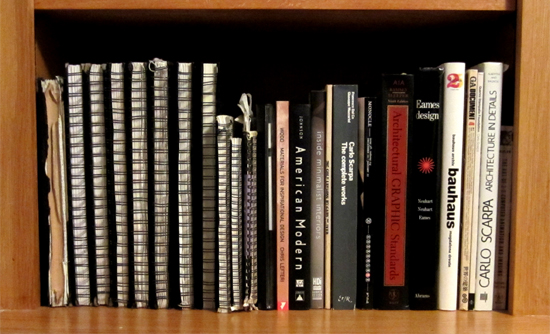Today I want to kick off an ongoing series of posts entitled Tools of the Trade.
I’m not talking about “tools” like that guy in freshman studio who would get his guitar out and play Dave Matthews Band songs to impress (or depress) chicks in your class…I’m talking about tangible items that help you carry out the day-to-day tasks of being an architect.
For the first installment of TOTT (yes I just acronymed that) I thought I’d write about one of the tools that I have used continuously since before my days in architecture school.
THE SKETCHBOOK
Architecture schools typically have a sketchbook on their mandatory freshman supply list. In my opinion it is one of the most important tools to help one document, problem solve, practice drawing and archive their career as an architect.
.
How to pick a sketchbook:
There are hundreds of different types of sketchbooks to choose from and it can be intimidating to figure out which one is just right for you. Realize that although it’s nice to have a series of similar sized sketchbooks that will sit neatly together on a shelf it’s not the end of the world if you switch it up from time to time. If you’re buying your first sketchbook you will go through an adjustment phase where you’ll realize what size, shape and paper type works best for you. The sketchbook I use is a wirebound 9”x12” hard covered 100 page book. This is my favorite type because this size gives you tons of space to draw on, it lays flat so you don’t have to mess with the crease and it is solid which allows you draw on a hard surface. The hardcover also protects your drawings from wear and tear. I have some sketchbooks that have taken me a few years to fill up and since the information inside is important to me I want to make sure the paper is protected from getting damaged.
The drawback to this sketchbook is that it can be a bit cumbersome. A 9”x12” book doesn’t exactly fit in your back pocket but, if you’re going to class, a meeting or traveling you’re likely going to be carrying a bag that you can easily stow it in.
What to put in your sketchbook:
First thing…always write your name and contact info on the inside cover. The last thing you want is to lose months of ideas and notes because you left it on a table at Starbucks or a seatback pocket on the airplane. Now, if you’re using your sketchbook to record illegal business transaction (or the sort) then I suggest you put somebody else’s name on the inside cover (you know, just in case).
After you have your contact info down just let the rest flow. Don’t be afraid to draw anything and everything that you can think of. I’ve noticed that there are a couple of reoccurring themes in my sketchbook…
.
Furniture projects (that I know I’ll build one day and earn millions of dollars on royalties from Knoll)
.
.
.
Architecture competitions (I usually spend hours sketching out ideas and don’t end up submitting anything)
.
.
.
Floor plans (plans of projects I’m working on, plans for hypothetical projects and remodel layouts for my own house)
.
.
Graphic design (logos and branding exercises for freelance work and competitions)
.
.
Museum exhibitions (all of my friends hate going to museums with my because I have to draw everything)
.
I find that the things I jot down in my sketchbook today are completely different from what I recorded 15 years ago when I was in school. I used to carry my sketchbook to all my classes where I’d write down thoughts, sketch ideas and solve design problems associated with my studio projects. Now, it seems, I only use my sketchbook for personal work and at the office I tend to use trace paper and post-it notes to get my ideas down.
Why you should have a sketchbook:
As I mentioned above I feel it’s important to have records of all of your thoughts, ideas and designs that are centrally located and easily accessible.
I have a small library of sketchbooks that I have filled up over the years and I find myself going through them every now and then remembering exactly what I was doing when I drew on the page. In some instances it’s a chronology of my day-to-day thought process….something that photographs or video can never convey.
If you’ve never used a sketchbook go pick one up. If you used to use one and haven’t in a while, go dust it off and start drawing again…I think you’ll enjoy it.
-scott
.
.







